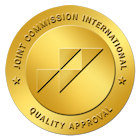Healing Begins Here
What Happens When You Withdrawal From Opioids?

What are Opioid Withdrawal Symptoms?
Some common opioid withdrawal symptoms include:
- Nausea and vomiting
- Diarrhea
- Stomach cramps
- Muscle aches and pains
- Restlessness or irritability
- Anxiety or agitation
- Insomnia or difficulty sleeping
- Excessive sweating
- Runny nose and watery eyes
- Goosebumps or chills
As the body adjusts to the absence of opioids, these symptoms may intensify before gradually improving. In some cases, individuals may also experience more severe symptoms such as hallucinations, seizures, high blood pressure, dilated pupils, and rapid heartbeat.
Opioid Withdrawal Timeline
Generally, withdrawal symptoms can begin as soon as a few hours after the last use and peak within 2-3 days. However, some symptoms may linger for weeks or even months.
- Days 1-2: The first few days after stopping or reducing opioid use are often the most intense. Symptoms usually start within 12 hours and peak around 72 hours after the last use. This period is known as acute withdrawal and may include flu-like symptoms such as nausea, vomiting, diarrhea, sweating, agitation, and muscle aches.
- Days 3-5: As the acute withdrawal period ends, symptoms may start to improve but can still be uncomfortable. Many individuals report feeling restless, anxious, and having difficulty sleeping during this stage.
- Days 6-7: By the end of the first week, most physical symptoms have subsided or significantly decreased. However, psychological symptoms such as anxiety and depression may persist for longer periods.
- Week 2+: Symptoms may continue to improve over the following weeks. However, some individuals may experience lingering symptoms such as fatigue, anxiety, and depression for several months.
Heroin is a highly potent and addictive opioid. Due to its potency, withdrawal symptoms can be more severe compared to other opioids. In addition to the common symptoms mentioned above, individuals withdrawing from heroin may also experience:
- Intense cravings for the drug
- Severe muscle spasms
- Rapid heart rate and high blood pressure
Crestview Recovery offers heroin addiction treatment for those struggling with heroin use.
Fentanyl is a synthetic opioid that is 50-100 times more potent than heroin. As such, withdrawal from fentanyl can be even more challenging and dangerous. Along with the common symptoms, individuals withdrawing from fentanyl may also experience:
- Difficulty breathing or slowed breathing
- Confusion and disorientation
- Seizures
It’s essential to seek medical assistance when withdrawing from fentanyl to manage these potentially life-threatening symptoms. We offer fentanyl addiction treatment to assist you.
Kratom is a substance that has been used for pain relief and as a recreational drug. It contains opioid-like compounds, making it potentially addictive and leading to withdrawal symptoms when stopped abruptly. Common symptoms of kratom withdrawal include:
- Runny nose and watery eyes
- Mood swings and irritability
- Insomnia and restlessness
- Muscle cramps and pains
How Long Do Opioids Last in Your System?
- Urine Test: Opioids can typically be detected in urine for 1 to 3 days after the last use. However, some opioids like methadone and buprenorphine can be detected for a longer period.
- Blood Test: Opioids are usually detectable in blood for up to 24 hours, although this can vary.
- Saliva Test: Opioids can be detected in saliva for 1 to 4 days.
- Hair Test: Opioids can be detected in hair for up to 90 days, providing a much longer detection window.
Can You Stop Using Opioids By Yourself?

Opioid Detox
Detox alone is not enough to overcome opioid addiction. It should be followed by a comprehensive treatment program that includes addiction therapy services and support to address any underlying issues contributing to the addiction. Detox can be done in a medical setting, such as a hospital or rehabilitation center, where healthcare professionals can monitor and manage symptoms.
Here’s a general overview of what opioid detox involves:
Detox should ideally be done under medical supervision, especially for those with severe addiction, to manage withdrawal symptoms safely and effectively. Medication-assisted treatment (MAT) combines medication with therapy and counseling to treat opioid addiction. The most commonly used medications for MAT are methadone, buprenorphine, and naltrexone. These medications help reduce cravings and withdrawal symptoms while individuals work on their recovery journey.
Symptoms can include anxiety, muscle aches, sweating, nausea, vomiting, diarrhea, and cravings. These can start within hours of the last dose and peak within a few days.
Certain medications can help ease withdrawal symptoms and reduce cravings. These include:
- Methadone: A long-acting opioid that can reduce withdrawal symptoms and cravings.
- Buprenorphine: Helps reduce withdrawal symptoms and cravings.
- Clonidine: Can help manage symptoms like anxiety, agitation, and muscle aches.
This includes hydration, nutrition, and emotional support to help the individual through the detox process.
Detox is just the first step. Long-term treatment, including therapy and support groups, is crucial for recovery and preventing relapse.
Therapy for Opioid Addiction
Self-Care During Opioid Withdrawal
- Stay hydrated by drinking plenty of water.
- Eat nutritious meals to provide your body with the energy it needs.
- Get adequate rest and sleep to help your body recover.
- Engage in gentle physical activity, such as walking or yoga, to improve mood and reduce muscle aches.
- Practice relaxation techniques, such as deep breathing or meditation, to manage anxiety and stress.
- Seek support from loved ones or a support group to help you through this challenging time.
Opioid withdrawal can be a challenging experience, both physically and emotionally. However, by understanding the common symptoms and timeline of withdrawal, seeking support from loved ones or professionals, and practicing self-care techniques, it is possible to successfully manage this process. Remember that everyone’s journey to recovery is different, and with determination and support, it is possible to overcome opioid addiction. Let’s continue raising awareness about the dangers of opioids and supporting those who are on the path toward recovery. Together, we can make a difference in our communities.
Opioid Addiction Treatment in Portland
Withdrawal from opioids can be a difficult and uncomfortable experience, but it is an essential step towards recovering from opioid addiction. Seeking professional help and support during this process can make all the difference in achieving lasting recovery and leading a fulfilling life free from the grip of opioids.
If you or a loved one is struggling with opioid addiction, contact us today to learn more about our evidence-based treatment options. There is hope for a brighter future free from opioids.





















